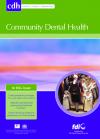Community Dental Health

- Cover Date:
- September 2006
- Print ISSN:
- 0265 539X
- Vol:
- 23
- Issue:
- 3
Editorial - Population Genomics and Dental Public Health
Background
Most clinicians are familiar with the child who in spite of poor oral hygiene, evidence of a diet rich in sugar and little exposure to fluoride remains caries free. In contrast, the young adult patient who maintains excellent oral hygiene, attends the dentist regularly and is highly motivated in terms of dental care, but still experiences signiï¬cant destruction of their periodontal tissues is also encountered. These scenarios raise the fundamental question, to what extent is dental and oral disease governed by nature or by nurture? In other words, to what degree do genetic or environmental factors influence susceptibility to dental disease and conditions? In early 2006, the Faculty of Public Health in the United Kingdom held a one day conference entitled “Genomics and Population Healthâ€. This event brought together geneticists, public health practitioners and government ofï¬cials. The primary purpose of the meeting was to explore current developments in the ï¬eld of genomics and to discuss their potential to impact on the health of the public. The emerging ï¬elds of genetic epidemiology and public health genomics have received little attention in dental circles. The purpose of this article is to provide a brief overview of developments in this area and consider their implications for dental public health. of the impact of human genome variation on population health and how genetic information can be used to improve health and prevent disease. Across the world a number of population cohort studies are underway to examine the effects of genetic variation on common traits. In the U.K., the Biobank Project will gather information on the health and lifestyles of 500,000 volunteers between 40 and 69 years of age. Following informed consent, each participant will be asked to donate a blood and urine sample, have some standard measurements (such as blood pressure) and complete a conï¬dential lifestyle questionnaire. Over the next 20 to 30 years UK Biobank will allow researchers to use these resources to study the progression of illnesses such as cancer, heart disease, diabetes and Alzheimer’s disease; however, there are no plans to study dental or oral conditions at this time. In addition, six Genetic Knowledge Parks have been established in England and Wales as part of the Government’s strategy to put Britain at the leading edge of advances in genetic technology. The Genetics Knowledge Parks are all linked to multidisciplinary centres of excellence and offer access to internationally recognised academic and clinical expertise on genetics in relation to healthcare. The Network is building the knowledge base on all aspects of human genetics, ensuring that the National Health Service is better placed to exploit the ï¬ndings of genetics research. What then is the relevance of these developments to dental and oral disease?
What is public health genomics?
Genomics is the study of genes and their function. A recent United States Centres for Disease Control and Prevention (CDC) sponsored committee has deï¬ned “public health genomics†as an emerging ï¬eld, which assesses the impact of genes and their interaction with behaviour, diet and the environment on the population’s health (Hernandez, 2005). The sequencing of the human genome completed in 2003, provided for the ï¬rst time, the blueprint for humankind and has raised the possibility of a much greater understanding of health and disease and their determinants. However, although the basic sequencing of the human genome is complete, many years of research and development lie ahead in determining the value and role of genomic information in the prevention and treatment of disease.
Genetics and oral disease
Genetic influence on disease broadly falls into one of two groups: Mendelian-inherited disorders, involving one (monogenic) or multiple (polygenic) genetic loci, and complex disorders involving the interaction of multiple genetic loci and environmental factors. Simple Mendelian disorders are characterised by a clinical phenotype that is highly correlated with the presence of a speciï¬c genotype, i.e. mutation, that alters or abolishes protein function so signiï¬cantly that a “disease†phenotype results. Many syndromes have been described that include dental conditions as part of a complex pleiotropic phenotype. However, Mendelian non-syndromic dental conditions are generally inherited as single gene disorders and include for example, amelogenesis imperfecta, dentinogenesis imperfecta, tricho-dento-osseous syndrome and Papillon-Léfevre syndrome (Hart et al, 2000). Although of great impact to the affected patient and the clinician responsible for their care, from a public health perspective, the low prevalence of these conditions limit their signiï¬cance. The common oral diseases that impose a substantial burden on society; dental caries,
Developments in public health genomics
The US Federal Government has established an Ofï¬ce of Genomics and Disease Prevention within CDC and established the Human Genome Epidemiology Network, or HuGENetâ„¢. This is a global collaboration of individuals and organizations committed to the assessment
- Article Price
- £15.00
- Institution Article Price
- £
- Page Start
- 130
- Page End
- 132
- Authors
Articles from this issue
- Title
- Pg. Start
- Pg. End
- Equity in children’s utilization of dental services: effect of a children’s dental care programme
- 152
- 157
- The Japanese version of the Oral Health Impact Proï¬le (OHIP) – validation among young and middle-aged adults
- 158
- 163
